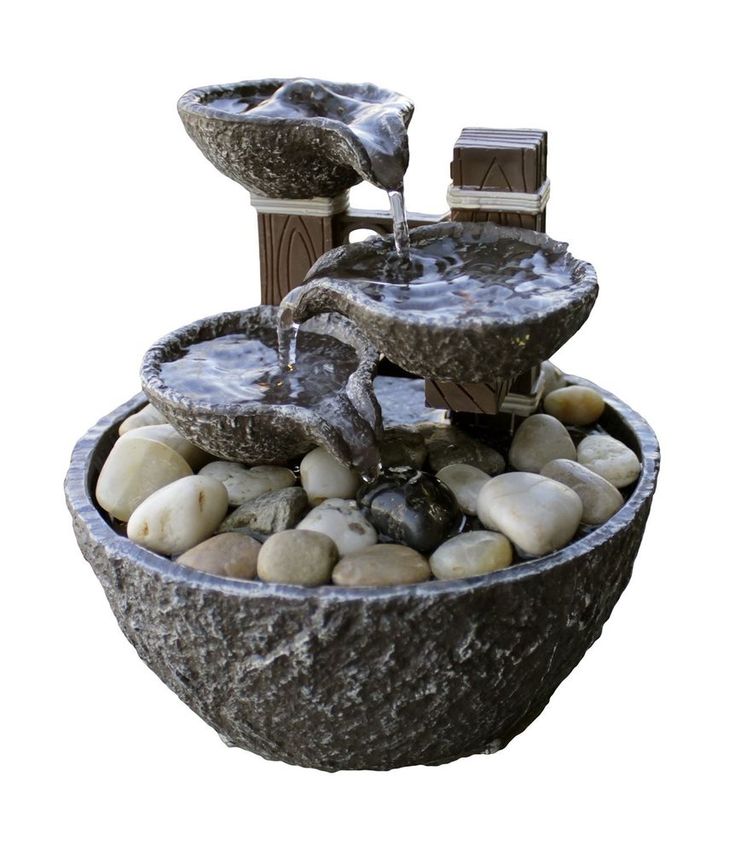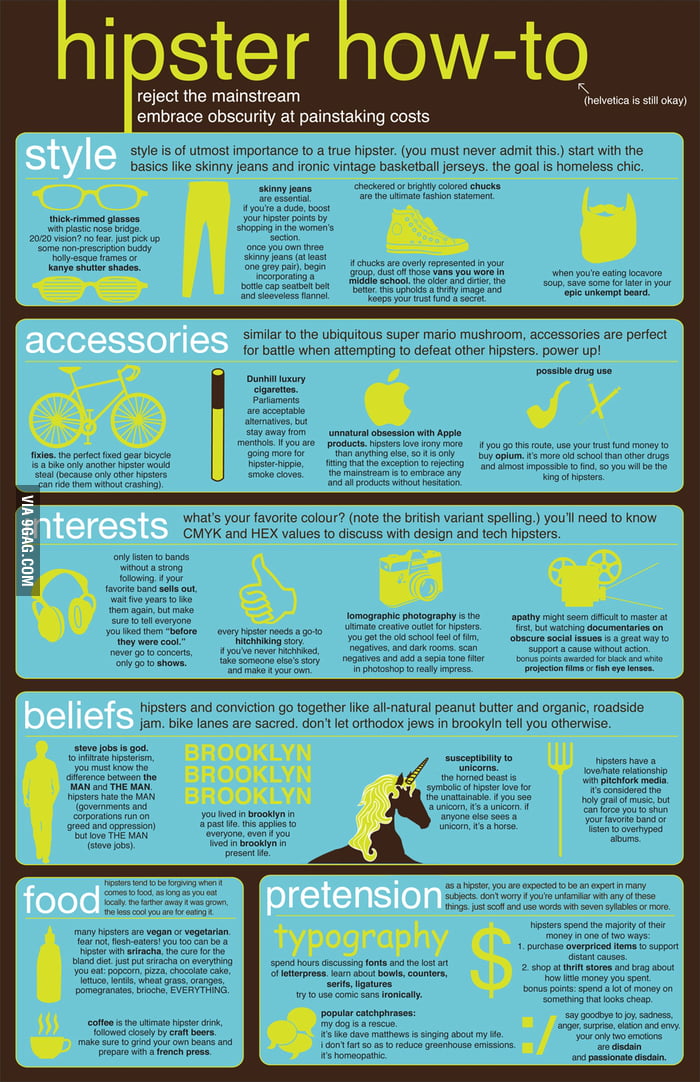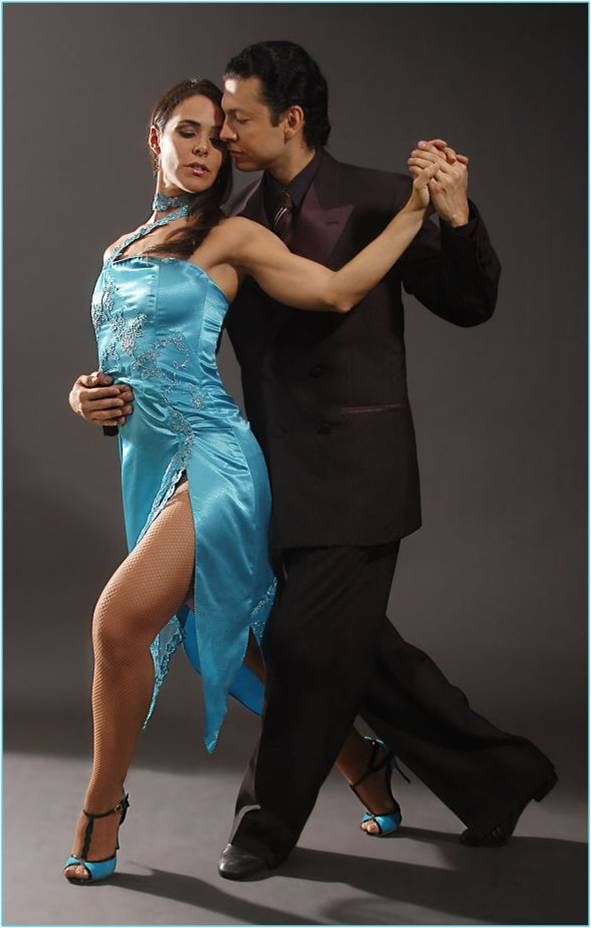How to make dancing water fountain
How To Make a Dancing Water Fountain?
Do you want to create a beautiful water fountain that dances in sync with your favorite music? This extensive step-by-step guide will help you create one in your garden or home. Let’s dive right in.
Water fountains can undoubtedly dramatically affect your yards, residential gardens, and other commercial projects. If you combine it with lighting and music, the aesthetics will make the visitors gaze for hours.
Dancing water fountains are gaining considerable popularity in big projects and cities with a high influx of tourists. The colorful lighting effect is combined with the gushes of water streams, creating a mesmerizing event. People from all over the world come to such places.
If you’re looking to boost your business by inviting more visitors, then adding a dancing water fountain to your project will do the job precisely. These lights, carefully placed underwater, added with the correct wattage, can easily become the focal point of any project.
But before heading on to place an order for water fountain lights, read this guide to learn how you can create and troubleshoot a stunning dancing water fountain. Moreover, we will discuss the benefits and tips on choosing the best LED water fountain lights.
Music Dancing FountainSteps Involved in Making a Dancing Water Fountain
If you’re inexperienced with electrical components, we advise you to help from our consultant to guide you through the process. Moreover, you can always hit up an expert electrician to help with the installation.
Setting up a regular lighted fountain indoors is more manageable, but if you’re installing a dancing fountain on a large scale, you need to ask for technical helping hands.
Here are the major steps involved in creating a dancing fountain.
1. Creating a Layout and Gathering ComponentsFirst, you need to define the size of the area of your water fountain.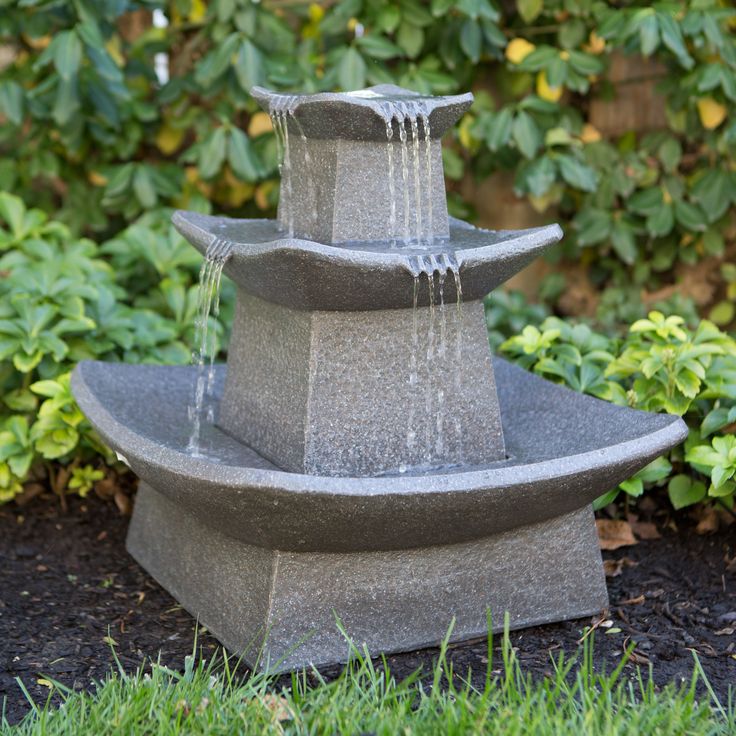 Then look for the design of your cybernetic system. These blueprints will help determine the final water choreography of your fountain project. Since dancing water fountain involves syncing of music with the water streams, the system requires thorough pre-analysis.
Then look for the design of your cybernetic system. These blueprints will help determine the final water choreography of your fountain project. Since dancing water fountain involves syncing of music with the water streams, the system requires thorough pre-analysis.
For this part, you would need to define two components, fountain nozzles, and water pumps.
· Fountain NozzlesFountain nozzles determine the flow of the water gushing out of the pool. For example, there are mainly five kinds of nozzles used in fountains.
- Crystalline Fountain Jets: These nozzles release a laminar flow of water
- Rotary Nozzles: For spirals and dynamic water flow, usually used in dancing and musical fountains
- Frothy Jets: Create a foamy flow of water; found chiefly in indoor fountains
- Spherical Shapes: Nozzles create a disk of water, ultimately giving the shape of a sphere
- Spray Nozzles: Such nozzles create a spraying effect
You can select multiple nozzles and arrange them in the Cybernetic formation to create a splendid design.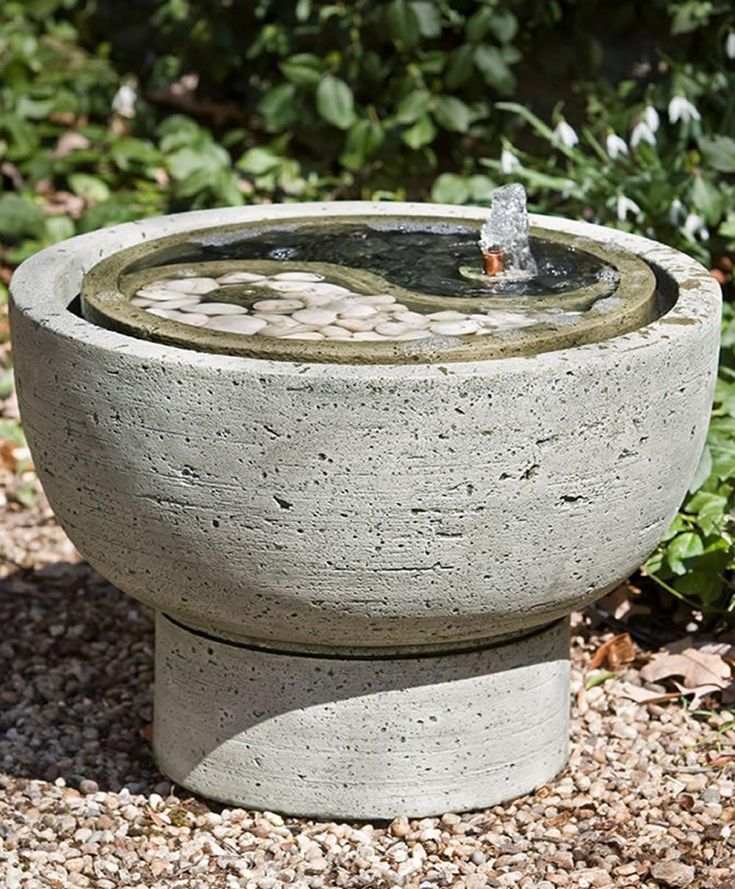 Choose the number of fountain nozzles, types, their placement, the height, and finally, the angle of the water stream that will gush out of the nozzles.
Choose the number of fountain nozzles, types, their placement, the height, and finally, the angle of the water stream that will gush out of the nozzles.
Water pumps in fountains are used to pump the water using centrifugal force originating from a propeller. Pumps keep the water flowing throughout the cybernetic system. Now determine the following things to select the best type of pumps for your project.
- Submersible or dry pump: The names tell where which type of pump is used. It depends on your project. Use submersible pumps if you’re pumping water out of the pool. Dry pumps cannot be submerged in water. They are placed on the dry part of the fountain, such as concrete and bricks around it.
- Nozzles for pumps: Important for pulling off the music choreography of the project. Select nozzles compatible with the pumps.
- Pump power: How high do you want your water streams to go? It depends on the flow data that you have written in your pre-analysis document of the cybernetic system.
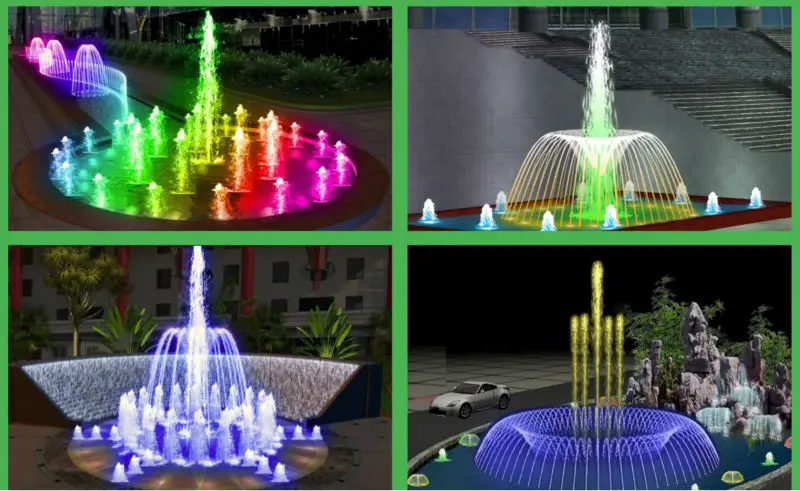 The pump power will be assigned to the nozzles that will pump the water out.
The pump power will be assigned to the nozzles that will pump the water out. - How to control the pump: Determine the type of control you will be opting for. Pumps can be controlled by frequency converter or direct starting process. Frequency converters are used to create the dynamic ascending and descending of the water streams during the dance. If your project doesn’t involve this movement, then direct starting pumps are used. Of course, the latter will be less expensive.
Solenoid valves are the control elements that can shut down, release, mix and move the fluids. They are responsible for the interactivity between different water jets and ultimately contribute to dynamism. It’s good practice to have a solenoid valve with every pump. However, depending on your structure, you can assign specific water pumps to have these valves.
· Water level controllersThese components control the height of the water stream during the event.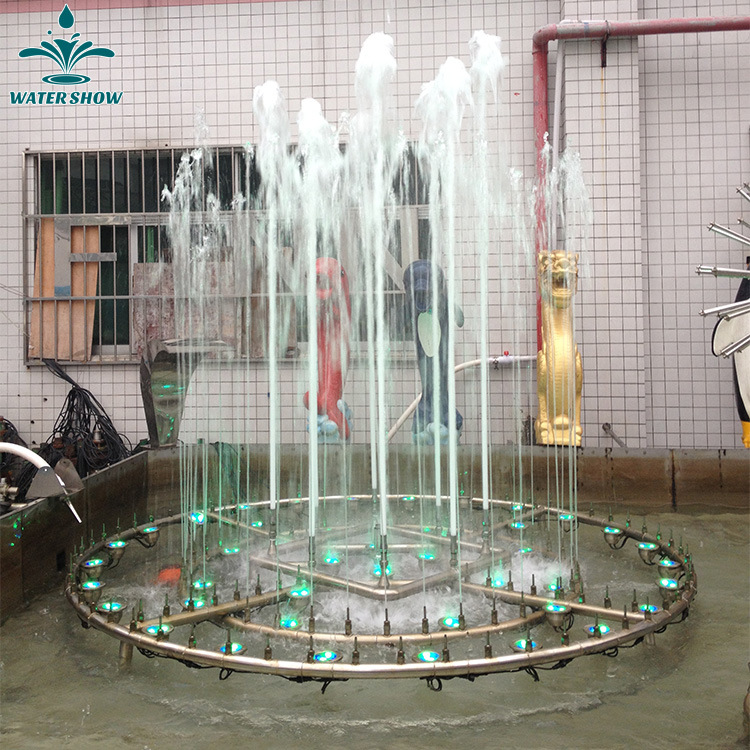 Its system automatically handles the maximum and minimum height of the water stream.
Its system automatically handles the maximum and minimum height of the water stream.
This is technically a part of the previous step. Determine which lights would go best with your desired outcome.
· LED Underwater Fountain LightsCompared to underwater incandescent bulbs, LED provides many advantages. LEDs are long-lasting, durable, robust, and most importantly, can be controlled by DMX controllers. A dancing fountain’s characteristic feature is the changing colors and intensities in sync with the music.
· Number of Lighting FixturesDetermine the total number of fixtures you require in the cybernetic structure. In this step, you also determine the location of these fixtures.
· DMX ControllerDetermine how you want the lights to behave during the event.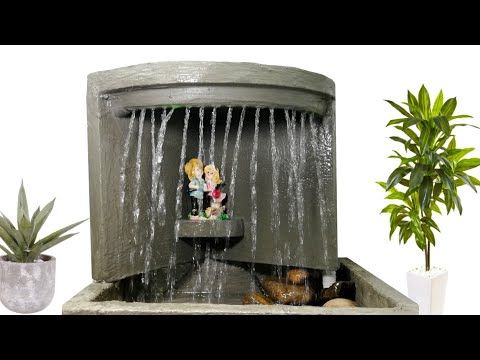 You can either control individual lights or group them to perform in a union using a DMX controller. You can change the colors and synchronize them with the music. This analysis goes side by side with the previous two steps of determining the number of fixtures and their placement.
You can either control individual lights or group them to perform in a union using a DMX controller. You can change the colors and synchronize them with the music. This analysis goes side by side with the previous two steps of determining the number of fixtures and their placement.
For a complicated project involving music and color-changing lights synchronized to produce mesmerizing effects, you require an electrical panel to easily control all the functions. A custom-made panel will take care of all the controls and perform them automatically according to the feed information.
3. DMX Control Panel Set-UpThe electric panel (as mentioned before), also known as the control panel, must be designed by an electrician before the desired outcome. For this step, you need experts. Some manufacturers will take care of this according to your needs.
· Interactive FountainsDMX512 protocols are the most widely used systems to control lighting dynamics.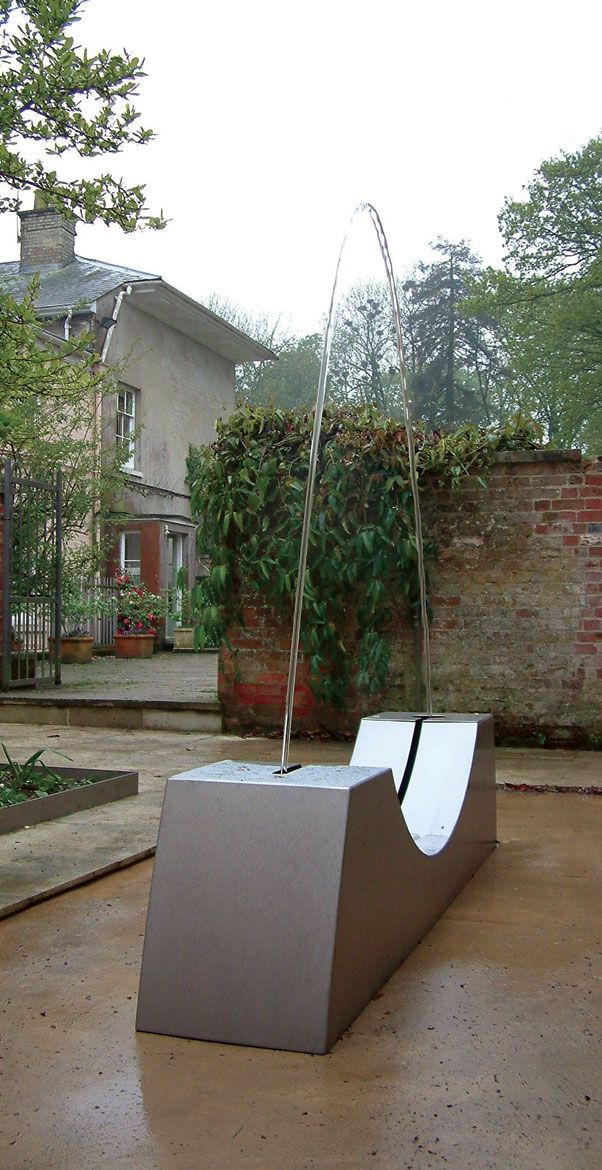 It is used to cater to the complexity of the fountain design. You can easily program and control the dynamic using a laptop or tablet from a distance. Or you can automate the system entirely.
It is used to cater to the complexity of the fountain design. You can easily program and control the dynamic using a laptop or tablet from a distance. Or you can automate the system entirely.
For dancing fountains and other such projects, a DMX controller and specific software create the lighting sequences and music design. You can create your sequences and custom output designs as well. This software controls all your requirements in one place.
If your fountain is a non-musical project, you can sync lighting with the dance movement of water only without integrating music sequences. An expert programmer can perform this job accurately! Following is a general structure of a dancing water fountain.
interactive fountainsAll the electrical equipment should be installed when the pool is dry. It is essential to check and test the water pumps and lights’ working before filling the pool with water. Make sure all the equipment is fixed at its designated position on the base of the fountain pool.
Now that you’ve set up your dancing water fountain, you will require some tips on maintaining it and troubleshooting if you face any problems.
The most common issues that you’ll come across are:
- Too much splashing of water
- Noisy fountain
- Lowered water pressure with time
To avoid these problems, make sure you follow the following tips:
- Control the intake of the pump to prevent excessive water splash.
- Make sure that the pumps you have installed are fully submerged in the pool of water.
- The pumps should not be vibrating. Fix them inside your pool or place them firmly.
- Make sure all the connections are tight and secure.
- Sometimes windy weather conditions can disrupt the waters streams. To rectify such a situation, you can use ‘Anemometers’ to automatically stop the water streams when the wind reaches a certain high speed. These components also help in turning off the lighting and water pumps in great high winds.
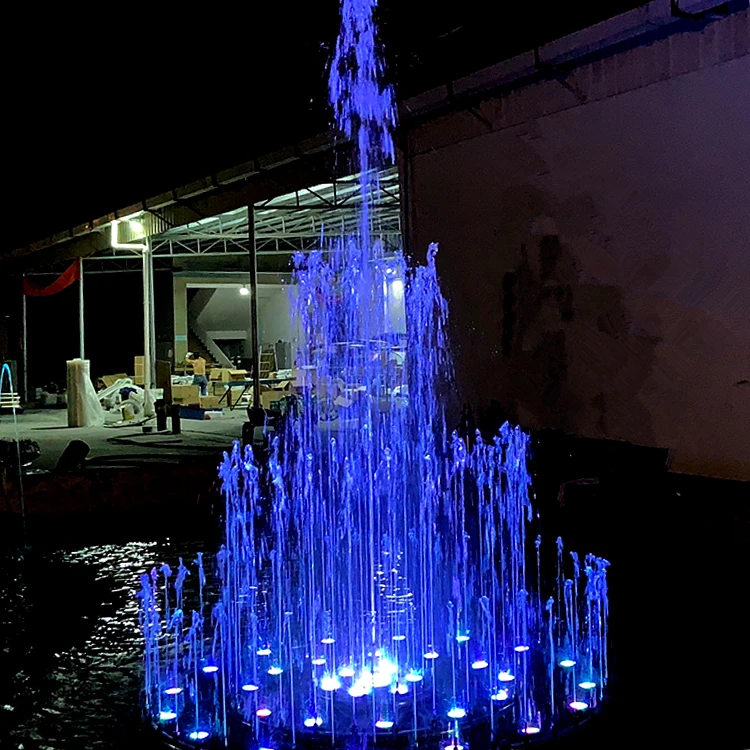
Water fountains should be cleaned and maintained after a few weeks. This is important because water has many impurities which can accumulate in the water pumps, hoses, pipes, and other components. This adversely affects the overall performance and reduces the life of electrical components.
- Drain the fountain and clean thoroughly, making sure all the leaves and debris are gone.
- Use stain cleaners, scale removers, algaecides, and other water treatments to wash off the clogged pipes.
- In some areas, you might find green fungi and algae use fountain cleaners to get rid of them.
- Always use environmentally friendly products!
- Fill the pool with fresh water and add any good water treatment product.
In some areas where temperatures are extreme, you will have to protect the fountain and cover it during heavy snow and freezing weather.
- Remove all the water from the tank.
- Disconnect all the electrical components and store them somewhere safe.
- Make sure the basement of the fountain is covered with plastic or hay so that the snow doesn’t accumulate.
- Cover the fountain with fountain bags.
Now that you know what components are required to create a dancing fountain let us tell you what advantages you should be expecting from it.
This is a brief overview of how LED fountain lights are your best business-boosting strategy. We have gathered a few benefits fountain lights offer so you can take advantage of them. If you have a dead fountain on your lawn, bring it to life!
These 12/24 Volt Low Voltage LED Fountain Lights can be used in many types of fountains such as a dry fountain, garden ponds, outdoor stone fountains, dancing fountains, and music fountains.
Submersible Fountain Lights1. Relaxing Ambiance
Relaxing AmbianceThe relaxing environment is the first and foremost benefit that a dancing fountain will provide to you and your visitors. This element surely attracts the people and children to an unimaginable extent. In the hustle and bustle of today’s world, people look for such places to visit and calm their nerves.
If you’re looking to install water fountain lighting in your homes and gardens, don’t wait any longer! LED underwater lights can be single-colored or RGB/RGBW color-changing. You can leverage this point and create a healthy environment around your project. This will prove lucrative in many years to come.
The soft and soothing sound of water combined with comfortable and color is indeed therapy for stressed-out minds. Not to mention, the lights give a new magical feel to your fountains at night!
2. Enhanced ValueThe value of a property or project can be improved in many ways, such as highlighting important features and increasing security and safety.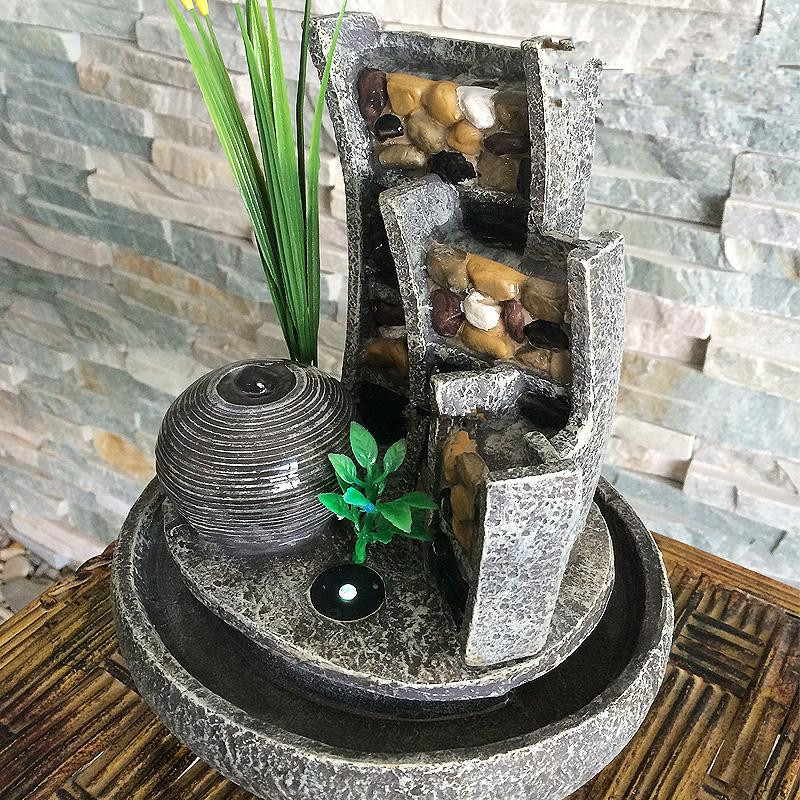 The look of any outdoor area can tremendously increase the value of that project. These water fountain lights can significantly uplift the outdoor look and appeal, skyrocketing the worth of a property. So, consider investing to gain a long-term benefit.
The look of any outdoor area can tremendously increase the value of that project. These water fountain lights can significantly uplift the outdoor look and appeal, skyrocketing the worth of a property. So, consider investing to gain a long-term benefit.
The life of underwater LEDs is not any shorter than the outdoor lights. LED water fountain lights are highly waterproof and watertight. These fixtures are designed with high-quality stainless steel in junction with other non-corrosive materials to enhance strength and durability. The manufacturers make sure all the components of underwater lights are tested to last long in the water body.
4. Energy EfficientLEDs, as we know, can provide up to ~80% saving on your electricity bills. It will be remiss not to add energy and cost-efficient options to your projects that can pay you back in multiplied amounts. LEDs do not require regular maintenance.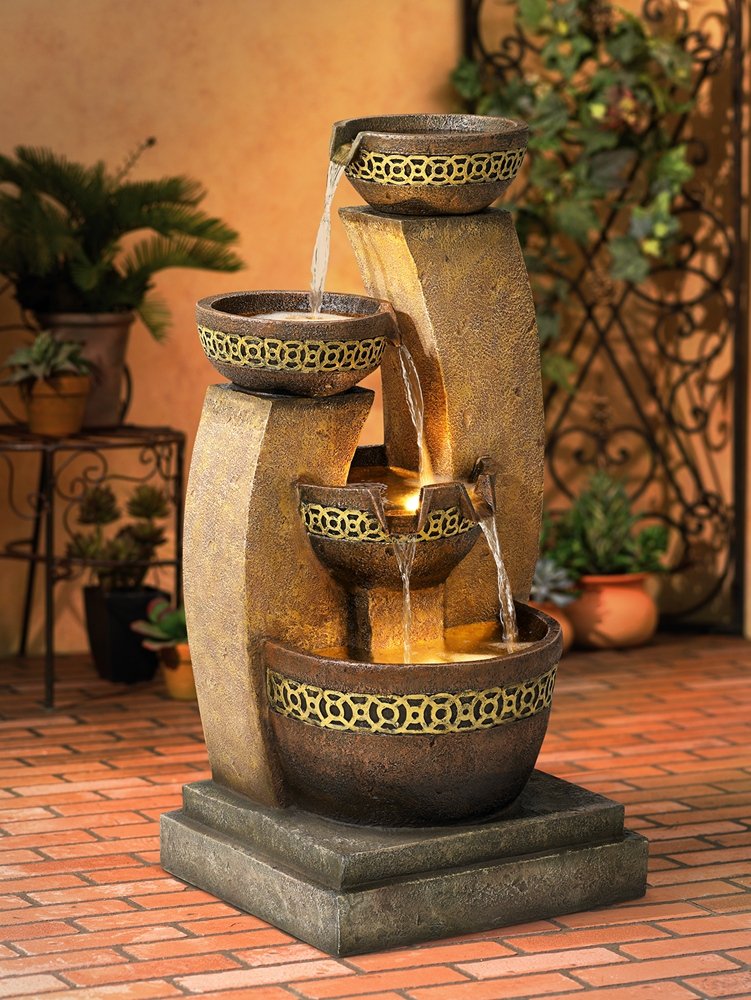
A well-lit fountain will improve the safety and security of the area. With safety comes value and more visitors. Children can play around the garden safely. The chances of any sort of accidents taking place will reduce.
How To Choose the Best Submersible LED Pond Fountain Spotlights?To see the dancing lighting fountain working splendidly, you need top-quality underwater LED lights. The synchronized choreography can be affected if any lights malfunction during the event and people can notice the disruption.
· Waterproof FixturesThe first thing is the waterproof quality of the fixtures. Find fixtures having IP68 or higher rating. They should be highly corrosion resistant and durable in the water. All the electrical components of the LEDs should be highly secure and watertight.
· Fixture MaterialStainless steel material is best suited for underwater fixtures as stainless steel is highly corrosion resistant and robust.
Lights underwater need to be bright so that the fountain pool in the night can be adequately lit. Some of the light disperses in the water, so you need high illuminance.
· Color OptionsYou can opt for single-colored LEDs or RGB/RGBW options to suit your fountain needs.
· Smart ControlThe best dancing architectural fountain uses the DMX controller to sync the movement with music and lighting. Traditional lights such as halogen and incandescent will prove to be non-efficient and costly in the long run. Choose the LED lights accordingly.
· Color of the LensesLEDs with colored lenses illuminate differently than clear lenses. The light coming through the colored lenses washes out and doesn’t give the best look. Keep this specification in mind.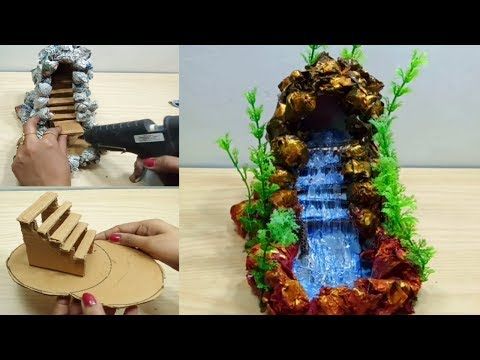
Since the transmissive nature of the lenses can disperse light submerged underwater, you need bright colors and a high level of lumens.
· Number of LumensFor underwater lights, the preferable number of lumens is 2500-3500 lumens. The lights should not be excessively bright and uncomfortable for the eyes. Note that the water reflection can cause glaring at night if the light is not positioned well or not of optimum brightness.
underwater led fountain lightsFinal Thoughts
Creating a DMX-controlled dancing water fountain requires you to be extremely precise and accurate. Just any person can not do the custom programming of control panels and installation. Only expert programmers and technicians can perform the job well.
On the other hand, if you want to install fountain lights in your residential swimming pool, ponds, and indoor fountains, you can easily install our submersible LED pond fountain spotlights.
Buy Fountain Lights from RC Lighting
Choose the underwater color-changing fountain lights that the smart systems can perfectly control. We offer 5 years of warranty with each of our products! Any tiny flaw can cease the function, so we recommend choosing the products that come with warranties.
If you require consultancy feel free to contact RC lighting. Our LED underwater submersible lights are of the highest quality, and numerous certifications back this fact.
RC Lighting is a lighting manufacturer in China. We provide a one-stop solution for your indoor and outdoor lighting projects. Ask for a quote now!
Dancing Fountains | Musical Fountains
THE CREATION OF FOUNTAIN SHOWS PROVIDES A MESMERISING EXPERIENCE FOR YOUR AUDIENCE
Dancing fountains, or musical fountains, provide an engaging feature, which when combined with beautiful music provides an incredibly moving and uplifting entertainment.
The use of fountains as decorative pieces dates back to the Roman era. With modern technology the design of water fountains is only limited by your imagination. The layout design of your fountain system will take inspiration from the architecture where it is going to be placed, and the themes and messages you wish to communicate. Like good architecture, good fountain design can really lift mood, creating a feeling of wellbeing, while entertaining your guests, audience or the general public.
With modern technology the design of water fountains is only limited by your imagination. The layout design of your fountain system will take inspiration from the architecture where it is going to be placed, and the themes and messages you wish to communicate. Like good architecture, good fountain design can really lift mood, creating a feeling of wellbeing, while entertaining your guests, audience or the general public.
The LCI Design and Delivery team enjoy creating new concepts for water fountains. A dancing fountain or musical fountain can be delivered as part of a wider multimedia show or be an attraction, maintaining the purity of its form.
LCI fountain design will create contemporary fountains using the latest technology and components. The fountain design will be creatively led so custom fountain effects will be created to deliver unique features where the design calls for it. Designs will be delivered to provide flexibility in fountain programming, but also provide reliability.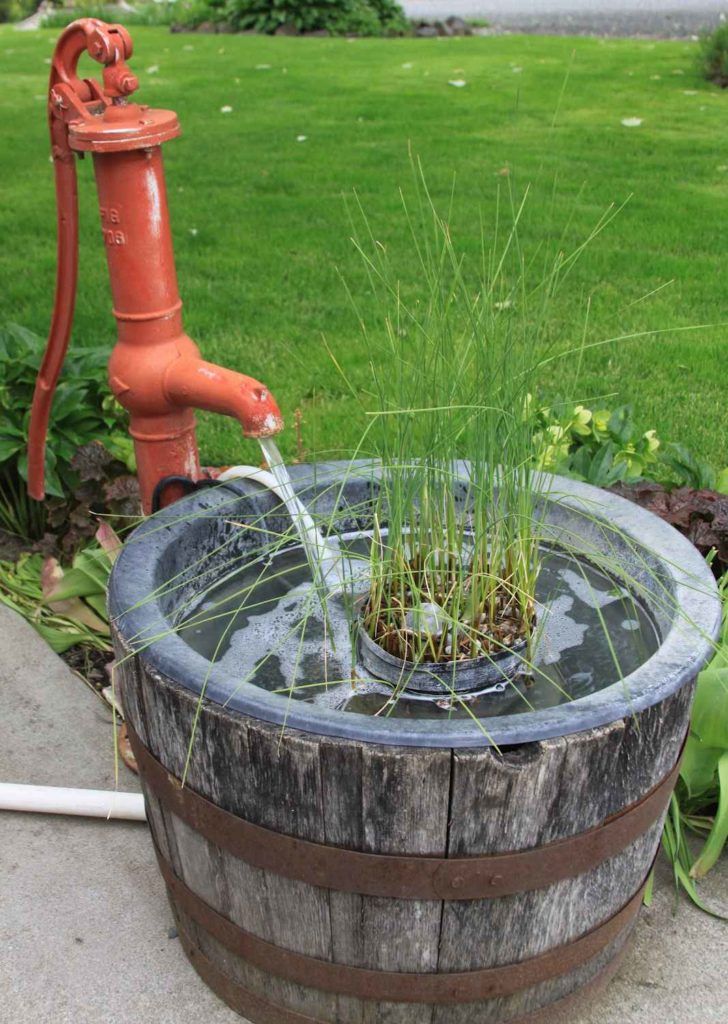
Once you provide your brief, the LCI Design team will develop initial concepts. We will also look at feasibility and approximate budgets based on your site, theme, desired audience, and funding structure. This process can be as collaborative as you wish. We really like to push the boundaries of what is possible.
As the concept is developed a full visualisation of the concept will be delivered, as both still images and in full animation. This will also help to develop the musical pallet you wish to explore, which might look at original music, classical selections, or using available production music.
A full design of the fountain system will then be developed based on an approved concept. This would also include development of the chosen control system and audio solution. The system design will utilise the best in pumps, LED Lighting, effect nozzles and moving nozzles. The system design will utilise stainless steel or durable plastic as appropriate.
For existing lakes or rivers where the fountain cannot be fixed, floating system will be developed.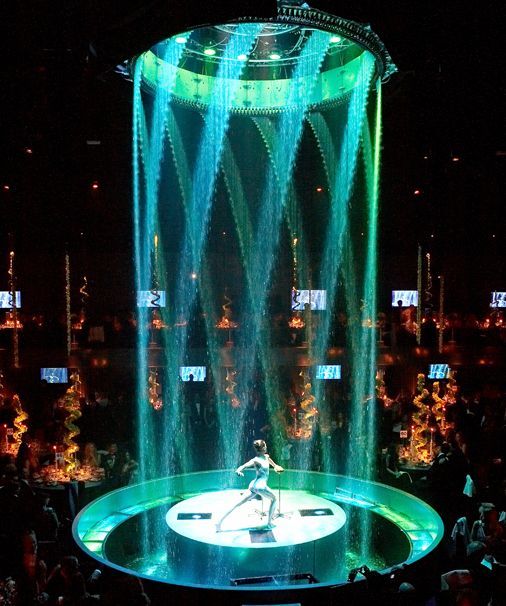 For saltwater conditions, the design will be adapted based on the conditions and might combine a floating solution with higher grade stainless steel, and sacrificial anodes.
For saltwater conditions, the design will be adapted based on the conditions and might combine a floating solution with higher grade stainless steel, and sacrificial anodes.
The fountain system will be built following the approved design, and fully tested before being shipped to the site. At the same time, any necessary site works will be completed, looking at the equipment rooms, power, filtration, audio and control infrastructure, as well as optimising the audience area.
In parallel to the process the fountain shows will be developed. The show development will be musically driven. This will involve the production of original music pieces with one of our composers, or the selection of existing tracks which might be rearranged to optimise them for the fountain show.
Once the music has been finalised the fountain shows will be programmed. These will be offered to you as full 3D visualisations, for approval and comment. This can all be completed prior to the fountain being operational.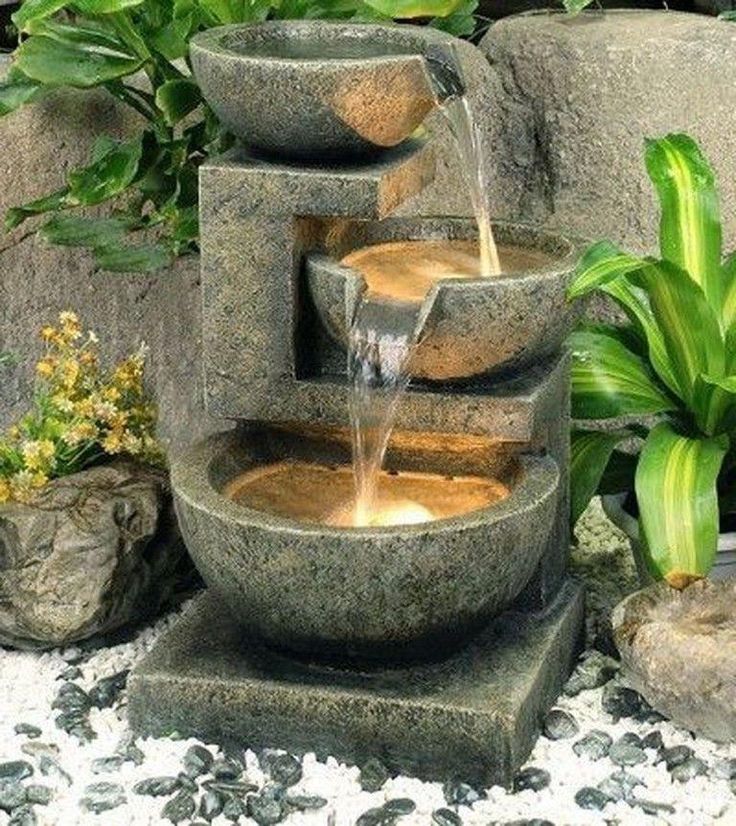
Once the equipment is ready and the site is prepared are engineers will install the fountain, test and commission it. During the commissioning we will train your technicians in operation. The control system will allow remote support and diagnostics, as well as uploading new shows that might be developed.
Our objective is to deliver you an amazing fountain system and to provide your audience with fabulous dancing fountains shows, whilst making the process as smooth as possible for you.
Please get in touch to discuss your projects musical fountains requirements. We love developing new fountain concepts.
How to Make a Dancing Fountain - Knowledge
Here are the basic steps to follow for any marketing, technical development and performance of a dancing fountain:
1.
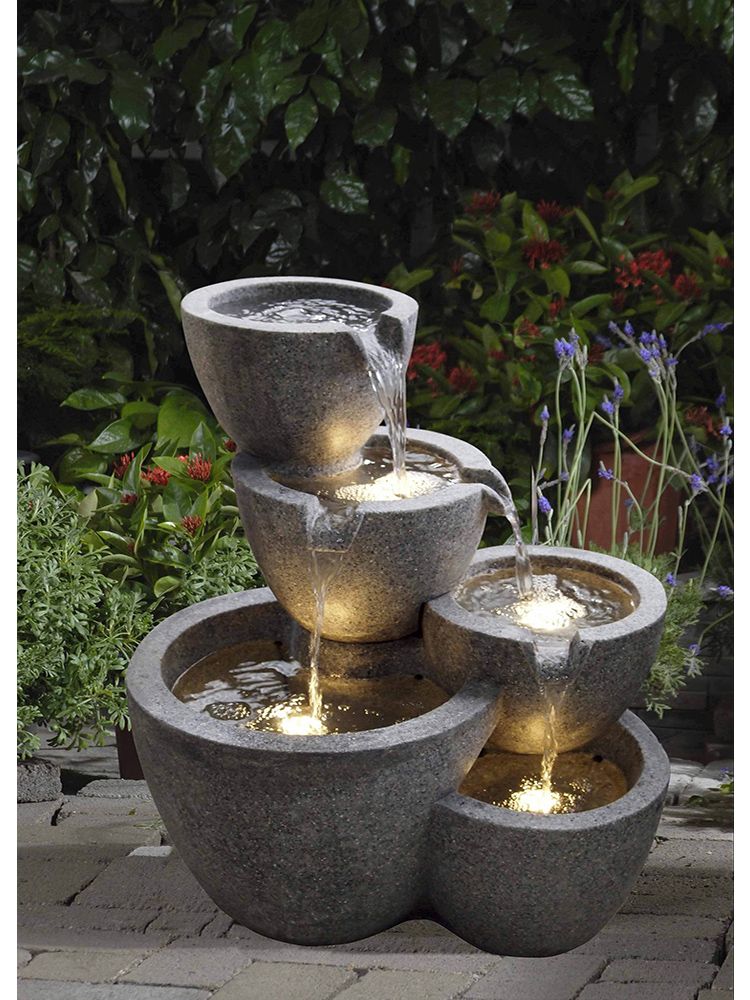 Determine the physical setting of the cybernetic or dancing fountain.
Determine the physical setting of the cybernetic or dancing fountain. The fact that the dancing fountain scenario is correctly defined determines the rest of the project. Below I will list the requirements needed to start working on our musical fountain project.
-
Fountain Nozzles: To get started, we need to determine the number, type, location, height and angle of all water jets that are in Cybernetic Fountain . The location of the nozzles will be critical so that we can determine the water choreography for the dancing fountain.
-
Water pumps . It is important to consider the following points:
-
Solenoid valves : we must determine which nozzles will be controlled by solenoid valves (submersible or not), because this will determine the interactivity of each water jet and ultimately the dynamism of the musical fountain. While the ideal choice is for each nozzle to have its own solenoid valve, this can also be done with submersible pumps (as shown on this project's map depending on the choice of the particular customer).
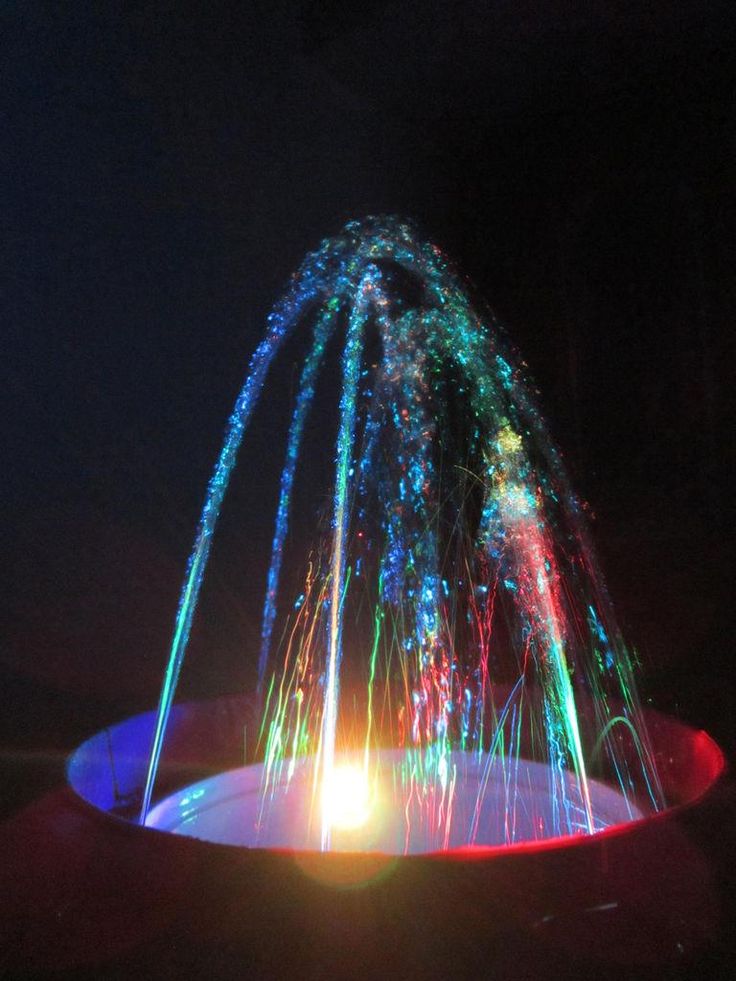
-
Choice between dry pumps or submersible pumps. The choice between one or the other depends on the type of dancing fountain you are making.
-
Nozzles are fed from each water pump. This choice is crucial to the further development of the water choreography that a dancing fountain can perform.
-
Selecting the power of the pump: once we have chosen the type of pump (submerged or dry) and nozzles, we select the power of these bombs. This will be determined by the pressure and flow data to be provided to the nozzles. This information is contained in the product data sheet of each of our nozzles.
-
Determine whether the pumps will be controlled by the frequency converter or direct start instead. In cases where you want the water jets to rise and fall in a controlled manner, we will choose a frequency converter, while if this is not necessary, we will choose a direct start water pump. This reduces the complexity of programming and significantly reduces the cost of the electrical part of the project, since frequency converters are expensive items.
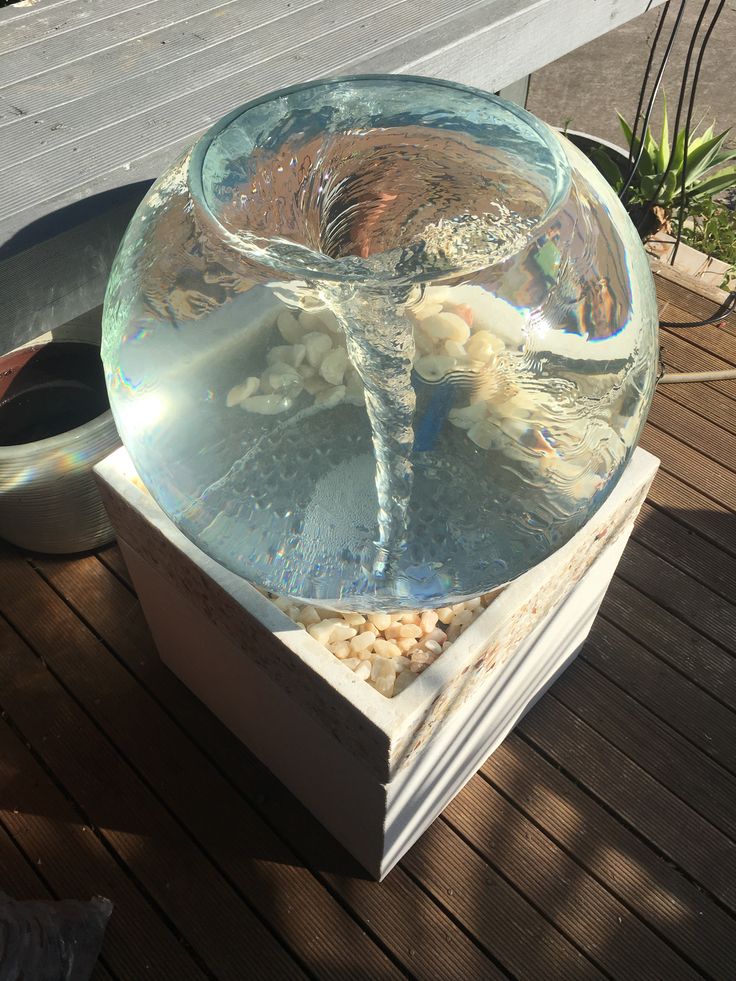
Fountain lighting. When illuminating a cybernetic fountain, the following considerations must be taken into account:
-
Determine the type of submersible light sources: choose between LED (white or RGB) or filament (white or colored using filters) with the advantages and disadvantages of each of the two options.
-
Having decided on the layout of the underwater lights: electric light groups determine the possibilities of enlightenment, you can control each color of the water jet separately or perform various combinations. The more control you have over each light, the more options you have when setting up a musical fountain, as well as the cost of a DMX control panel.
-
Determine the number of light sources that will enter the fountain so that, as a general purpose, decorative lighting exceeds environmental lighting.
-
Fountain accessories. When designing the control panel, all other dancing fountain accessories common to any other object, such as an anemometer or level controller, should be considered.
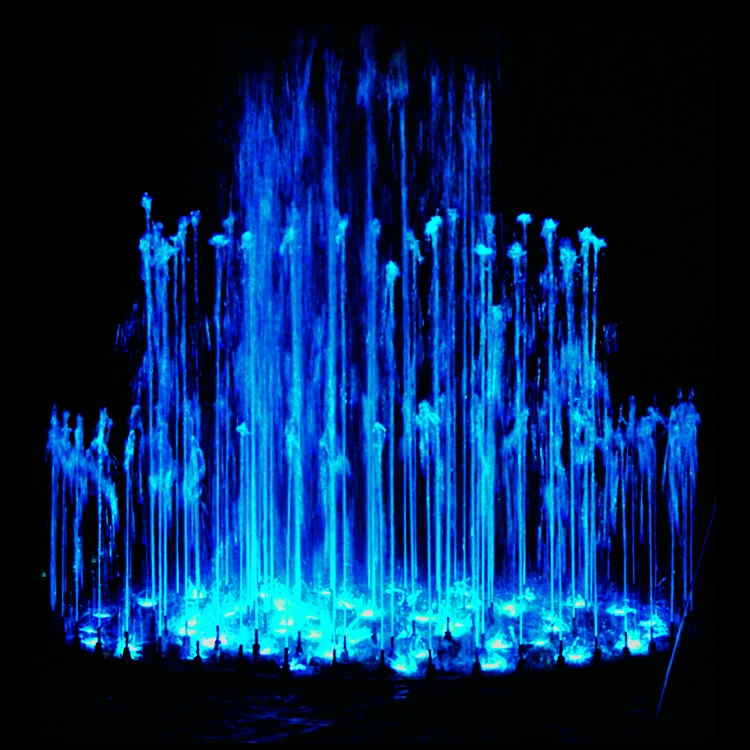
2. 3D animation of the dancing fountain
Is there a better way to sell a dancing fountain so that you can watch it work before installing it? At SafeRain, we believe this is not the case, which is why we offer this exclusive service to our partners worldwide. This cutting-edge technology tool allows you to visualize how water will dance to the beat of music in 3D video to your customers.
-
In order to develop a 3D video for your project, we will need the following information in addition to the requirements listed above:
-
Photos of the place where the musical fountain will be built. This is optional, you can always virtualize the dancing fountain in 3D without including the background, but there is no doubt that adding the location of the fountain will give a realistic 3D video of the dancing fountain.
-
The song is needed for musical choreography.
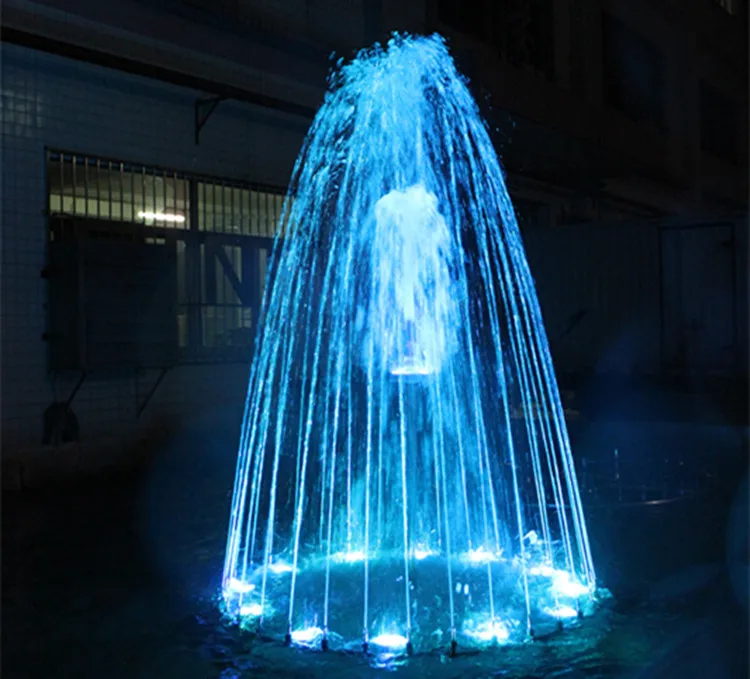 For the musical fountain, we need you to provide us with a song that does not exceed 2 minutes. In cases where there is no music in the cybernetic fountain, we obviously do not need a song.
For the musical fountain, we need you to provide us with a song that does not exceed 2 minutes. In cases where there is no music in the cybernetic fountain, we obviously do not need a song.
3. DMX Technology Control Panel Design
In the face of cybernetic fountain control panel design, we must start by choosing between DMX or PLC technology. In any case, the SafeRains technical department always makes a decision based on the technical and economic criteria that best suits your dancing fountain project.
Music Fountain : we will always use the DMX protocol by integrating a computer (or tablet computer) into the control panel. DMX512, often shortened to DMX (Digital Multiple X), is an electronic protocol used in lighting technology to control show lighting, allowing communication between lighting control equipment and light sources. In the case of musical fountains, we use the DMX protocol and special software that allows us to integrate musical choreography with water features and lights.
Based on the detailed requirements at the beginning of this article, we will design a control panel to control your dancing fountain.
-
Interactive fountain without music : depending on the complexity of the project, we can use the PLC or DMX protocol. We usually use the DMX protocol to control a large number of elements used independently, and the PLC in cases where there are more physical groups of common elements.
4. Preset the software for the DMX control panel.
Once the control panel needed to operate the cybernetic fountain has been designed and manufactured, it's time to design the water features we previously defined in the 3D video. For now, we can help you by leaving the following points in our hands: fountains were correctly set in the program. We believe that this step will save you hours of work, for a task that we are accustomed to developing.
Realization of a non-musical show. Musical fountains usually work without music, music just sounds for certain events. For non-musical fountains and musical fountains running without music, we define a show in which the water features are not supported by music, but the jets and lights synchronize themselves. This show will be repeated cyclically while the fountain is running. This will be long enough that the viewer cannot remember the sequence.
Musical fountains usually work without music, music just sounds for certain events. For non-musical fountains and musical fountains running without music, we define a show in which the water features are not supported by music, but the jets and lights synchronize themselves. This show will be repeated cyclically while the fountain is running. This will be long enough that the viewer cannot remember the sequence.
Music water show setting : after setting the logic setting, we have to program how we want the water jets to dance, depending on the selected music. To do this, the software, based on a common timeline for music, lights and jets (pumps, frequency converters or solenoid valves), develops work sequences that will make all components synchronized and fully coordinated. At this stage, the creativity and experience of the programmer is fundamental. If you like, we put all our knowledge at your service.
Do-it-yourself fountain - 68 photos of homemade options and their decorations
There is hardly a person who would not like to have their own small pond on the plot near the house to make it special.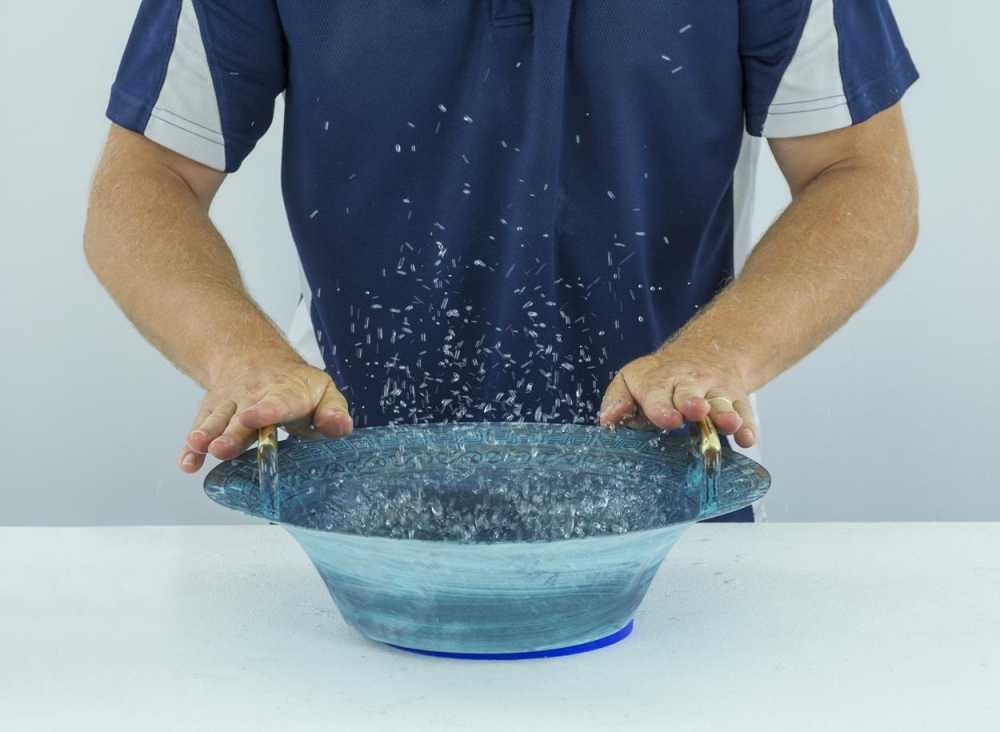
And if you create such a reservoir yourself, it will really become a unique and favorite vacation spot, from which you will receive a lot of positive emotions and words of delight from all your acquaintances and friends. All the splendor of the fountain in the country house is shown in the photo.
However, not everyone decides to build a pond on their own. Probably, many are afraid of the unknown process of hydraulics, believing that it is difficult and expensive, and only specialists can figure out such a design. But it's not.
If desired, anyone can afford to build a fountain in the yard near the house, the main thing is to know some details of the fountain creation technology.
Overview content:
Determination of the type of fountain
There are two types of fountain depending on their design:
When water enters the nozzle, the so-called open view. A jet of water in this case appears due to level differences in water. But because of this, the water pressure is weak and constant monitoring of the water level is needed. The water quickly becomes cloudy as a result.
But because of this, the water pressure is weak and constant monitoring of the water level is needed. The water quickly becomes cloudy as a result.
When creating such a fountain, it is worth taking care of a medium-sized reservoir installed 1 m above the nozzle.
When pump assembly is required. This option is more suitable and effective in application.
The bottom pump keeps the water circulating. As a result, the water pressure is higher and the spray of the fountain is more effective.
Pumps are also divided into two types according to the type of device:
- Immersion. The pump is located at the bottom of the reservoir. The structure includes: a pipeline, a pump and a nozzle, on which the shape of the jet at the outlet depends. This fountain looks like a spring, strongly beating from the ground.
- Surface or fixed. Basically, such a fountain is made of artificial stone in the form of various figures: a girl, an animal, a vase, a flower, etc.
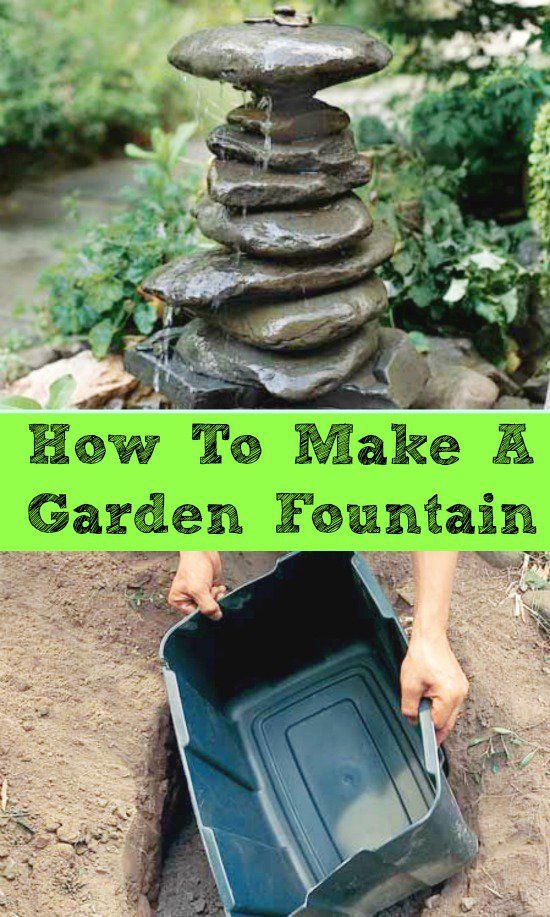 As a result, it looks like a sculptural masterpiece. Such facilities are available in city parks of culture and recreation
As a result, it looks like a sculptural masterpiece. Such facilities are available in city parks of culture and recreation
Locations
When determining a suitable location for a garden fountain, keep the slope of the ground in mind.
On a hilly plot of land, it is better to install a picturesque decorative part in a lowland. Thus, you will adjust the amount of groundwater and ensure a more complete saturation of the air with oxygen molecules.
Do not build fountains:
- practically next to the house, so as not to oversaturate the walls with moisture.
- in the open sun, otherwise the water will bloom quickly due to the direct rays of the sun.
- near massive vegetation and trees, as roots can break the waterproofing, and falling leaves, fluff, etc., clog the water.
The fountain must not obstruct access to various areas of use and must be visible from all angles.
Place it near your resting place.
There must be at least 50 cm from the fountain to the area of vegetation, houses or furniture so that the plants do not die from waterlogging, and the furniture does not fail for the same reason.
The most advantageous location for the fountain will be a slightly shaded place, hidden from the wind, near sources of water and electricity, in order to reduce the consumption of wires and the time to isolate them.
Once a suitable location has been chosen, the next step is to choose the shape and depth.
Required materials
In order to save money, time and own strength, it is better to use the technology of building a reservoir with a pump device to build your own fountain.
To do this, you will need the following materials: container, pumping system, polyethylene, spade bayonet, artificial or natural stones, sand and gravel soil, decorative elements.
Tank selection and installation
To build a compact mini fountain with your own hands, it is better to use an ordinary plastic basin or a similar container.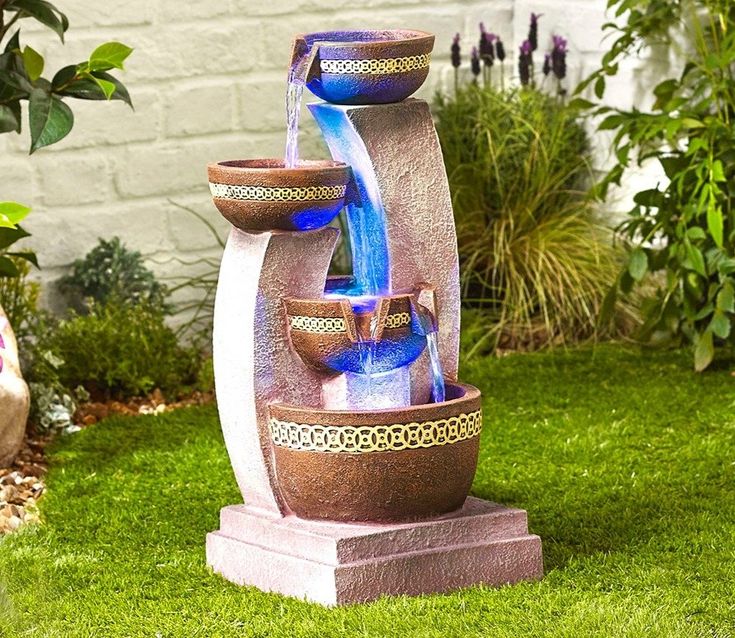
For large structures, used bathtubs are often used or they dig a pit of the required size on their own.
Under the bath, they also dig a hole of a certain size so that its edges do not rise above ground level.
Check in advance whether cracks or holes need to be sealed in the bath. If not, feel free to lower it into the prepared pit and fix it with stones, sand and earth.
In the absence of the necessary capacity, you can dig a pit yourself, taking into account the selected dimensions. Then they are covered with durable polyethylene and reinforced with stones along the edges. The bottom is completely and evenly covered with various smooth stones.
Choosing the right pump
It is not necessary to purchase expensive materials to build a fountain with your own hands, you can safely use used ones. But it’s still better to fork out for a pump and get a good one.
The submersible pump is the most suitable option. It acts like a centrifuge. The surface type of the pump is more often used for large fountains and reservoir cascades, and when installed in a summer cottage, installation is carried out from the edge of the reservoir.
It acts like a centrifuge. The surface type of the pump is more often used for large fountains and reservoir cascades, and when installed in a summer cottage, installation is carried out from the edge of the reservoir.
To select the right pump, the constant water pressure in the pipe and its variations must be taken into account. Otherwise, a pump of greater power will not be able to work at full strength and will have to be replaced with a less powerful one.
The diameter of the pipe is also important when determining the power, because the jet should powerfully beat out of the fountain, and not ooze, depicting a kind of fading spring.
Staged construction of a home fountain
The construction of a fountain consists of the following stages:
- excavation;
- reinforcement of the trench ditch;
- immersion of the tank or covering it with polyethylene;
- pump installation;
- decorative arrangement.

Fountain with PE foil
The following materials are needed for this: strong polyethylene, shovel, sandy soil, pumping system, stones.
Execution steps:
- We prepare the pit, remove the stones and ram the base;
- We completely cover the bottom with sand, sieved in advance;
- We cover the entire pit with polyethylene film, capturing the edges around it;
- The pit, covered with a film, is securely fixed around the entire perimeter with stones;
- Mounting the pump;
- We decorate the fountain with decor;
- Fill with water.
Fountain from an old bathtub
For this you will need: a shovel, small stones, a pump, a used bathtub, tape insulation, metal shears, non-ferrous metal sheet and a drill.
Procedure for the construction of the fountain:
- Pit swarm slightly larger than the bathtub;
- We lower the bath into it and close up holes and cracks;
- We line the sides inside the bathtub with strips of non-ferrous metal, covering them with stones;
- At the bottom we place small multi-colored stones;
- We put a pump in the center of the building;
- To add brightness to the fountain, you can supplement the structure with lighting, and tint the water with blue.

Plastic Bottle Fountain
You will need: plastic bottle, stiff wire or nail, insulation tape and watering hose.
The device of such a fountain is very simple:
- Take an empty bottle, previously cleaned of excess parts;
- Use a nail or wire to make holes;
- Push bottle onto garden hose and secure with duct tape;
- Place in the garden and run water.
House fountain without pump
For its construction, prepare: a large flower pot, a pallet, paints, a water pump, contours, decor.
- Paint the pot;
- Making a hole in the bottom of the pot;
- Place the pump under the pallet;
- We pass the pump tube through the pot hole;
- We cover the bottom with pebbles;
- We decorate with different things and vegetation;
- Fill with water.
Decor
Various decorative things will help to make the fountain beautiful: multi-colored stones, potted plants, figurines, ceramic products, etc.